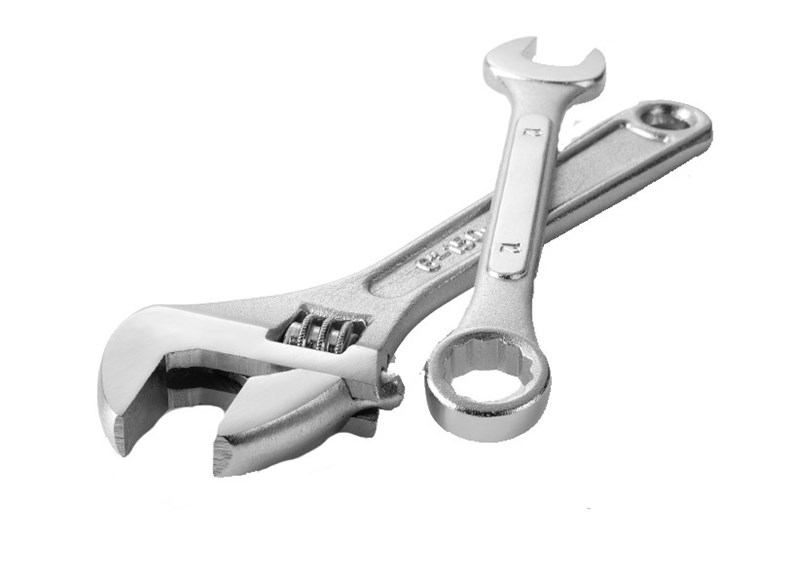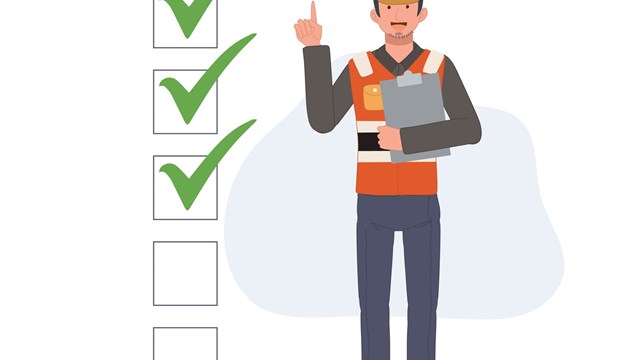Your home is your haven, your sanctuary, the one place where you can feel comfortable, safe, and secure. At least, that’s what a home should be. But according to the National Safety Council, no fewer than 15 household accidents resulting in serious injury occur every minute. And while just "being careful" is certainly better than nothing at all, being aware of and taking precautions to guard against the most common types of household danger is an even more prudent way to ensure that you and those who live with you don’t become part of this frightening statistic.
Fire Safety is Job One
With its power to destroy both property and lives, fire is a primary source of danger around the house, and precautions must be taken to prevent its potential devastation.
To minimize the chance of an electrical fire, make sure not to overload electrical circuits and not to plug major appliances into wall sockets not designed for them. Also make sure that all halogen lamps are level, can’t topple over, and are placed away from flammable objects.
Cooking-related fires and burns can be avoided by turning the handles of pots and pans away from the edge of the stove, tending to food so it doesn’t burn, and not wearing loose or flowing sleeves while cooking.
Other fire-related perils can be averted by using only fireproof ashtrays, dousing butts before discarding, never smoking in bed or when tired, and by placing lit candles away from flammable items and wind gusts, making sure that the flame is extinguished and the wick is cool before discarding the candle, and not going to sleep while candles are still burning. Of course, matches and lighters should be placed out of the reach of children and away from other sources of flame ignition.
If you’re lucky enough to have a fireplace in your apartment, always preheat the flue, make sure there’s a screen to prevent embers from escaping, be careful taking the ashes out, and don’t close the flue prematurely. Also, keep your fireplace and all associated apparatus clean and in good working condition.
Finally, make sure that the smoke detectors are installed and operational. Remember to check their operation monthly and check the batteries twice every year. (Scheduling this when the clocks are turned back and forward, or on New Year’s Day and the Fourth of July, are good ways to remember.) Also, always keep a working fire extinguisher available. And if a fire should occur in your apartment and you are unable to contain it, stay low, leave the apartment immediately, notify the building staff and the Fire Department, and follow their instructions. Do not go back into the apartment under any circumstances until instructed to do so by the Fire Department.
Don’t Let Your Home Shock You
Like fire, electricity is a necessity of life, but it can also pose a significant double threat of both fire and shock in the home. Rule one when it comes to electricity is never to overload outlets or extension cords, and to always make sure that all electrical cords are in good repair, not frayed, and tacked down whenever possible. Inexpensive ground fault circuit interrupters, a device that helps prevent injury from electrical shock, can be installed wherever electrical appliances are used. (Check your building’s policies to determine how this can be done within your own apartment.) And since water conducts electricity, keep all electric appliances away from any source of water, especially, but not only, sinks and bathtubs/showers. Finally, make sure that small and/or portable electric appliances (including, but again, not only, irons and space heaters) are unplugged when not in use.
Breathe Easy
Gas ovens, gas-operated space heaters and clothes dryers, and other gas-operated appliances are of concern when it comes to peril in the home. If you use a gas stove, make sure that all the burners are completely in the off position before and after you use them to cook. If you use a space heater (which most buildings don’t allow), keep it away from all fabrics and other flammable items and unplug it when you’re done. Also be aware that there have been instances of flames shooting out from gas-operated clothes dryers.
If at any time you smell gas escaping from a gas-operated appliance, avoid using flame or fire anywhere in the area, as a single spark can cause combustion. Instead, make sure that all electric-and gas-operated appliances are off, call your superintendent immediately, open windows to ventilate the area, and leave the apartment to avoid breathing the fumes.
Speaking of breathing, air quality poses another potential danger in the home. While the incidence of carbon monoxide, a colorless, odorless, and tasteless gas that can cause significant physical injury and even death, is not as great within apartments as it is within single-family homes, it is still wise to install a detector near sleeping areas.
Formaldehyde is another gas that is generally not associated with home danger but does present a threat. This gas can affect individuals with asthma and other breathing problems and also can cause rashes and watery eyes. It is most often present in construction materials, and also in new furniture, draperies, and carpeting. To minimize its effects, make sure that areas where it may be present are well ventilated.
Similarly, mold is also an air quality threat within the home, and some types are highly toxic. To ensure that the toxic effects of mold are reduced, keep areas prone to dampness (such as bathrooms) dry and well-ventilated, and clean with a solution of one cup of chlorine bleach to every gallon of water, remembering to ventilate the area as you work and never to mix bleach with anything but water.
Chemicals Also Threaten
Although we don’t think of the home as a place where chemicals are stored, the fact is that from household cleaners to nail polish remover, toxic and potentially dangerous chemicals abound in the home. Ways to avoid injuries from them include making sure that their containers are securely closed and stored where children and others cannot get to them, handling them according to the instructions on the packaging, not mixing them together unless you read the label first and are certain no harm or damage will result, and keeping them away from sources of heat and flame.
Don’t Fall Down When It Comes to Safety
Wet floors, unsecured area rugs, and countertops are all causes of unnecessary slips and falls that commonly occur at home. It’s easy to slip and fall on a wet floor or to trip over the edges of an area rug that hasn’t been made to lay flat. And if you’ve ever seen an over-eager child climb onto a countertop to reach for a box of cookies in a high cupboard, you’ve witnessed a potential disaster.
Slips, trips, and falls around the house account for numerous visits to hospital emergency rooms, yet they’re easy to prevent. Safety on the floor includes keeping floors dry and making sure that people know when the floors are wet (such as when a liquid spill has occurred or after the floors have been washed/waxed), wearing non-skid foot coverings (socks, running children, and glossy floors are a dangerous combination), and making certain that rug and carpet corners are well secured. And when it comes to leaving the floor to reach high places, stable step stools and ladders should be used instead of standing on chairs, countertops, etc.
Two other household surfaces notorious for slips and falls are the bathtub/shower floor, and stairs. In the bathtub/shower, nonslip mats or strips are a must and grab-bars are strongly recommended. On the staircases, well-secured railings or banisters on both sides help to maintain balance and prevent falls.
Special Safety Tips for Homes With Young Children
Everyone wants their children to be safe at home, yet thousands of children annually suffer injury from accidental falls, suffocation, electric shock, drowning, and poisoning within their own homes. The safest homes for youngsters are those in which parents have asked themselves where and how a child could be in danger, and then taken precautions to avoid those threats.
Here’s a list of ways to keep your kids safe at home:
• Make sure that all windows have properly-installed window guards as required by New York City law.
• Install child-proof locks on kitchen and bathroom cabinets (including medicine cabinets), liquor closets, and anywhere else poisonous or dangerous items are stored.
• Install child-proof covers on electric outlets, and special child-proof latches on toilet bowls.
• Fill bathtubs with no more than three inches of water, and stay with the child during bath-time. (Children can drown in as little as three inches of water.) Also, use a spout guard to prevent head injuries in the bath, and a mixer faucet to prevent hot water burns.
• Give your child age-appropriate toys to play with, and purchase toys and games that do not contain pieces which fit into children’s mouths.
• Place ‘bump guards’ on the edges of furniture against which children might fall, and secure safety gates in doorways of rooms into which children should not go unattended.
• Keep all flammable, poisonous, and other potentially dangerous items securely closed and locked away from where children can get to them.
Remember that safety precautions for children change as youngsters become taller, more mobile, and better able to manipulate devices.
Despite even the best safety precautions, accidents still can happen. When they do, their effect can be financially, as well as physically and emotionally, devastating. To protect yourself financially, it’s wise to maintain adequate and appropriate property and liability insurance coverage.
Mr. Kuperberg is president of Cooper Square Realty, a property management firm in Manhattan.







Leave a Comment